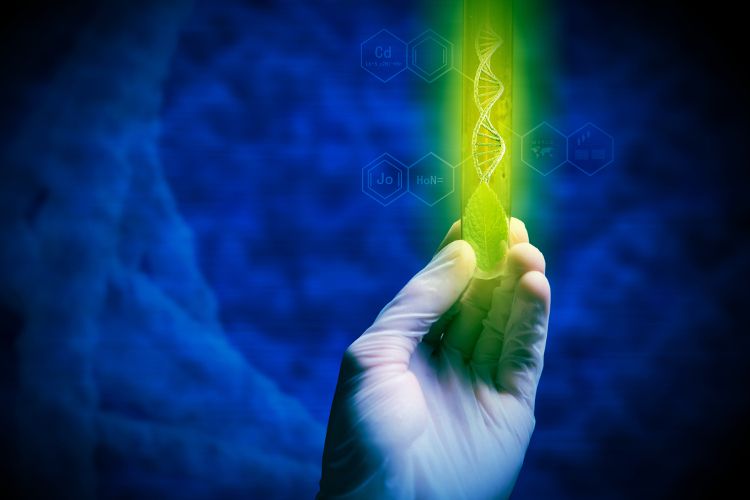Can DNA testing really be done on botanical extracts? Herbalife conducts its own trial.
Herbalife scientists tested the company's own green tea extract product for DNA content.
Photo © Shutterstock.com/Sergey Nivens

The botanical dietary supplement market has grown exponentially in recent years and is expected to keep that pace well into the coming years. Most recently, the American Botanical Council’s 2017 HerbalGram Herb Market Report1 stated that in 2017, U.S. retail sales of herbal dietary supplements eclipsed $8 billion for the first time, growing 8.5% from 2016-the strongest growth the category has seen in more than 15 years. The growing botanicals market means there is more need than ever before for manufacturing quality products and assuring proper species authentication. However, confirming authenticity of botanical ingredients can be challenging due to plant diversity, the complex nature of natural phytochemicals, and technological advances in processing and analysis.
Several analytical chemistry techniques currently used in the industry for identifying botanical materials include high-performance liquid chromatography (HPLC), high-performance thin-layer chromatography (HPTLC), nuclear magnetic resonance (NMR), and mass spectrometry (MS). Currently these techniques are useful in profiling chemical composition of a botanical supplement. Scientists make conclusions regarding species identity by matching measured chemical profiles to known standards.
The profile of an herbal dietary supplement product can be challenging to analyze and authenticate using these test methods, for a number of reasons. Some constituents may be found in several other botanical species besides the target product, and there is often considerable overlap in chemical composition among plants of different species. Because of this, another analytical technique may be needed for more accurate authentication of a botanical species.
DNA Testing
DNA analysis is that other analytical technique. It is a useful tool for confirming that the botanical species listed on an herbal supplement’s product label is actually the one in the product. Despite DNA testing’s success in identifying fresh botanical materials, however, problems arises when attempting to authenticate processed botanical ingredients-such as those in a finished supplement-using DNA testing. Extensive processing of raw materials-including conventional heat treatment, filtration, and fluid extraction-removes much of the DNA and reduces the fragment size of remaining DNA, affecting genomic characteristics upon which to make an identification.
To understand the industry-posed question about how quality and quantity of DNA from botanical material is affected through industrial processing, Herbalife Nutrition collaborated with University of Guelph to investigate the accuracy of using DNA testing to authenticate Herbalife Nutrition’s manufactured green tea extract (GTE)2. Green tea was selected as a suitable botanical model because of its global importance (its use as both a supplement and beverage), and because we have access to the processing, from raw plant materials to finished ingredient extract. We analyzed our GTE product for DNA content to better understand DNA testing for authentication of the botanical species.
Study Results
Upon DNA testing of the GTE, the researchers observed a significant reduction of DNA in the extractable DNA within the sample. The DNA fragment size was significantly reduced as the raw material went from the field (collecting fresh tea leaf, withering fresh tea leaf, rolling fresh leaf, drying fresh leaf) to the processing that took place in our manufacturing facilities.
The most significant DNA loss occurred within the high-heat treatment steps: 300°C oven for 30 seconds, and 150°C oven for 10 minutes, respectively. This is consistent with the understanding we have of DNA denaturation, that such high temperatures can break covalent bonds in the backbone of DNA molecules, thus breaking down and degrading DNA. This suggests that the routine high-heat treatments in botanical extract production are among the most physically harmful to DNA.
In the collaborative study, we saw a 41.1% decrease in mean extractable genomic DNA concentration from fresh tea leaves to dried green tea material, and a further 99.7% decrease of DNA concentration in GTE, which is the end product of processing. The remaining DNA fragments were degraded to a size that conventional DNA analytical technologies cannot detect.
To overcome these obstacles, we used sensitive capillary electrophoresis to visualize degraded DNA fragments and targeted Polymerase Chain Reaction (PCR) to enrich DNA sequence for correct identification. Nevertheless, the study’s results, which were recently presented at the Association of Official Analytical Chemists (AOAC) Annual Meeting held in Toronto, Canada, further demonstrates that Herbalife Nutrition has the capability to successfully extract DNA from tea and identify the highly processed GTE using our test method by focusing on the degraded DNA fragments that are often missed by conventional DNA-based technologies.
DNA Testing Moving Forward
For further research, we suggest framing discussions of botanical extract DNA in terms of the presence of “useful” DNA. “Useful” DNA is defined as DNA that is degraded but still long enough to be uniquely linked to the target species. To develop DNA-based methods with consistent results, we should first determine the feasibility of target botanical extract by visualizing the presence of “useful” DNA, then design an appropriate test method based on its fragment size to target the species of interest. The GTE study presented at AOAC meeting serves as a good example.
Yanjun Zhang is principal scientist, Natural Products Methods Research, Global Quality, at Herbalife Nutrition. This piece is based on recent research presented at the Association of Analytical Communities (AOAC) Annual Meeting.
References:
- Smith T et al. “Herbal supplement sales in US increased 8.5% in 2017, topping $8 billion.” HerbalGram, The Journal of the American Botanical Council, no. 119 (Fall 2018): 62-71
- Faller A et al. “DNA quality and quantity analysis of Camellia sinensis through processing from fresh tea leaves to a green tea extract product.” Presented at Association of Official Analytical Chemists (AOAC) International’s Annual Meeting and Exposition; Toronto, Canada; August 26-29, 2018.